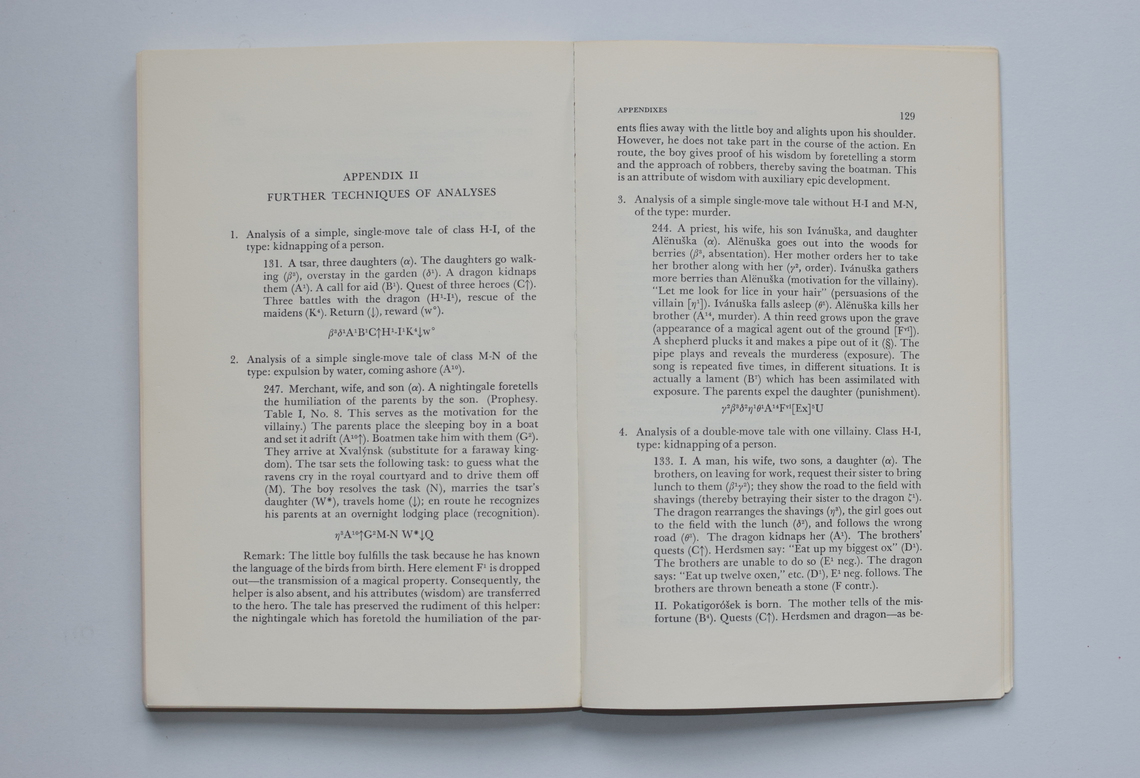Morphology of the Folktale, "Techniques of Analysis"
-
Vladimir Propp’s Morphology of the Folktale, published in Russia in 1928 but not translated into English until thirty years later, was an important influence for anthropologist Claude Levi-Strauss’s paradigmatic analysis of repeated mythical themes and literary theorist Roland Barthes’s analysis of sign systems. Propp created compendia of folk and lyric songs, as well as Russian peasant feast days.
Analyzing the folktales collected by Alexander Afanasyev in the 19th century, Propp argued that only 31 basic structural elements, or “functions of the dramatis personae” constituted the building blocks of all these stories. For example, his list of “functions” began and ended: 1. Absentation, 2. Interdiction, 3. Violation of Interdictions, ….. 27. Recognition, 28. Exposure, 29. Transfiguration, 30. Punishment, 31. Wedding. Each function was given a sign (e.g. α, β, A, B) which was then used in “schemes” to represent the narrative trajectory of an entire tale. On display are examples of tales broken down into their constituent function and displayed with their corresponding notations.
Introduction
- Label
- Morphology of the Folktale, "Techniques of Analysis"
- Author
- Vladimir Propp (translated by Laurence Scott)
- Original Publication Date
- 1928
- New Publication Date
- 1968
- Publisher
- University of Texas Press
- Location
- RBML
- Case
- 2
